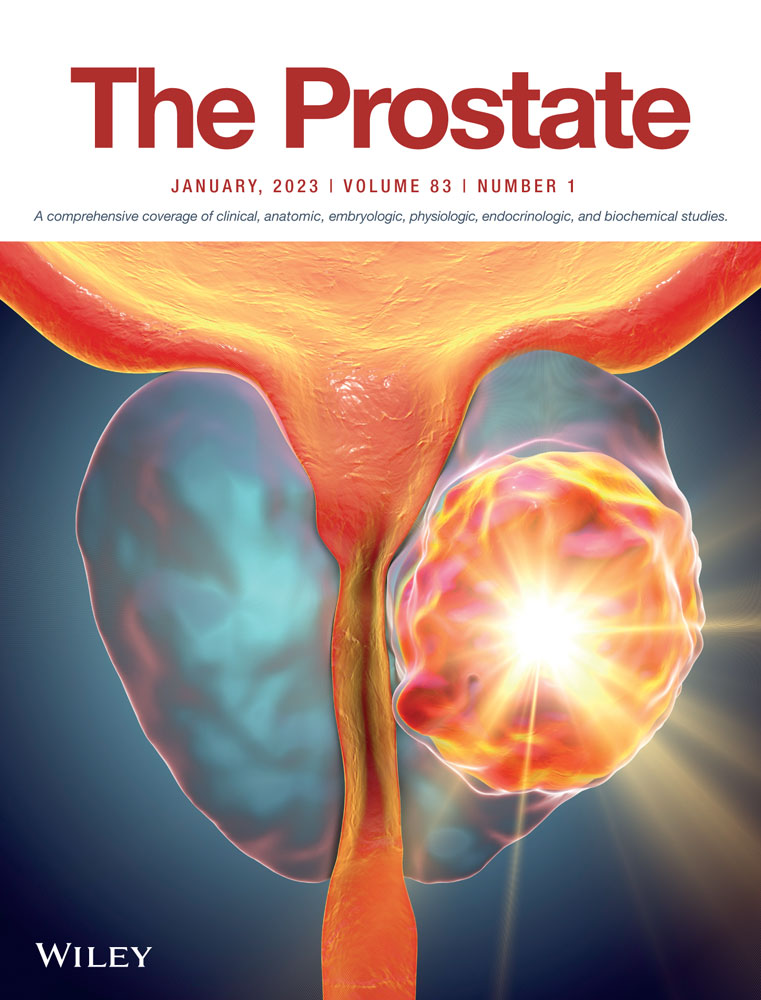Therapy decisions after diagnosis of prostate cancer in men with negative prostate MRI
Florian A. Schmid and Laura Lieger contributed equally to this study.
Abstract
Background
To investigate the clinical implications of magnetic resonance imaging (MRI) negative prostate cancer (PCa) in a cohort of men undergoing transperineal prostate biopsy.
Methods
We included all men without prior diagnosis of PCa undergoing transperineal template saturation ± fusion-guided targeted biopsy of the prostate between November 2014 and March 2018. Before biopsy, all patients underwent MRI and biopsies were performed irrespective of imaging results. Baseline characteristics, imaging, biopsy results, and follow-up information were retrieved from the patient charts. Patients were classified as either MRI negative (Prostate Imaging Reporting and Data System [PIRADS] ≤ 2) or positive (PIRADS ≥ 3). ISUP grade group 1 was defined as clinically nonsignificant (nsPCa) and ≥2 as clinically significant PCa (csPCa). Primary outcome was the individual therapeutic decision after diagnosis of PCa stratified according to MRI visibility. Secondary outcomes were the sensitivity and specificity of MRI, and the urooncological outcomes after radical prostatectomy (RP).
Results
From 515 patients undergoing prostate biopsy, 171 (33.2%) patients had a negative and 344 (66.8%) a positive MRI. Pathology review stratified for MRI negative and positive cases revealed nsPCa in 27 (15.8%) and 32 (9.3%) and csPCa in 26 (15.2%) and 194 (56.4%) of the patients, respectively. The rate of active treatment in the MRI negative was lower compared with the MRI positive cohort (12.3% vs. 53.2%; odd ratio [OR] = 0.12; p < 0.001). While men with negative MRI were more likely to undergo active surveillance (AS) than MRI positive patients (18.1% vs. 10.8%; OR = 1.84; p = 0.027), they rarely underwent RP (6.4% vs. 40.7%, OR = 0.10; p < 0.001). Logistic regression revealed that a negative MRI was independently protective for active treatment (OR = 0.32, p = 0.014). The specificity, sensitivity, negative, and positive predictive value of MRI for detection of csPCa were 49.2%, 88.2%, 56.4%, and 84.8%, respectively. The rate of adverse clinicopathological outcome features (pT3/4, ISUP ≥4, or prostate-specific antigen [PSA]-persistence) following RP was 4.7% for men with MRI negative compared to 17.4% for men with MRI positive PCa (OR = 3.1, p = 0.19).
Conclusion
Only few men with MRI negative PCa need active cancer treatment at the time of diagnosis, while the majority opts for AS. Omitting prostate biopsies and performing a follow-up MRI may be a safe alternative to reduce the number of unnecessary interventions.
Open Research
DATA AVAILABILITY STATEMENT
The data that support the findings of this study are available from the corresponding author upon reasonable request.




